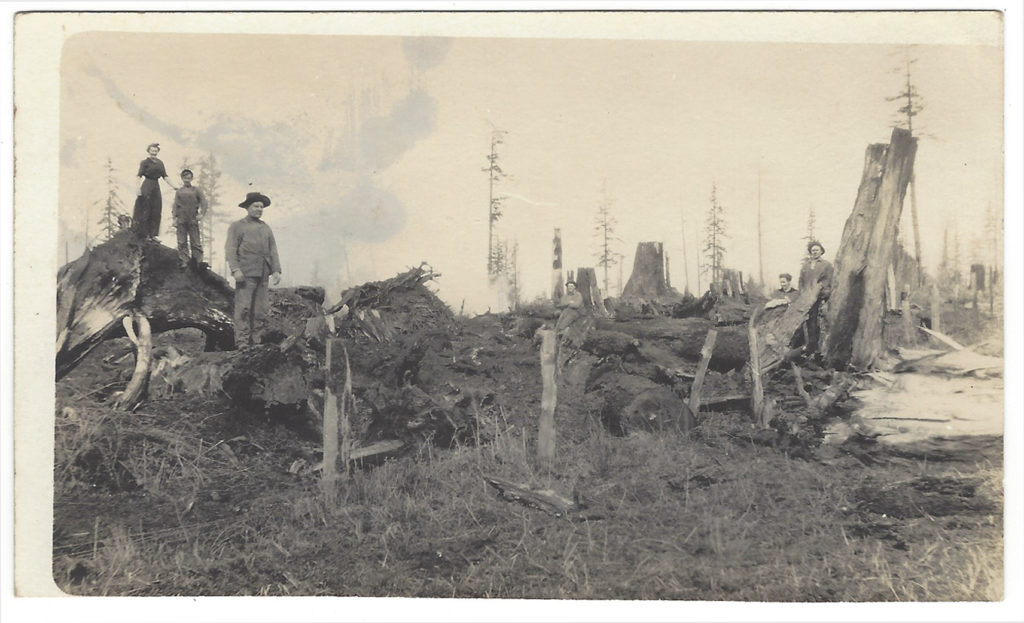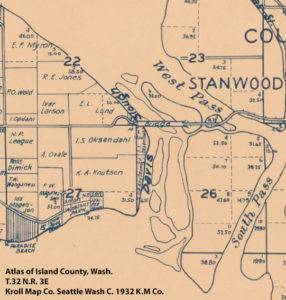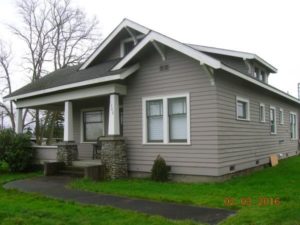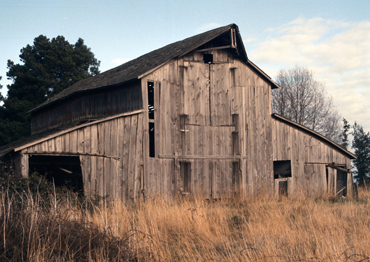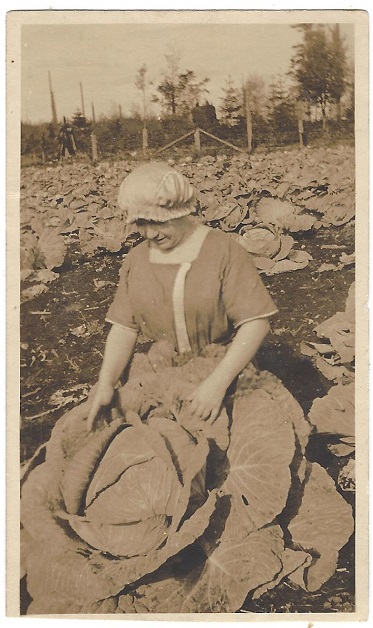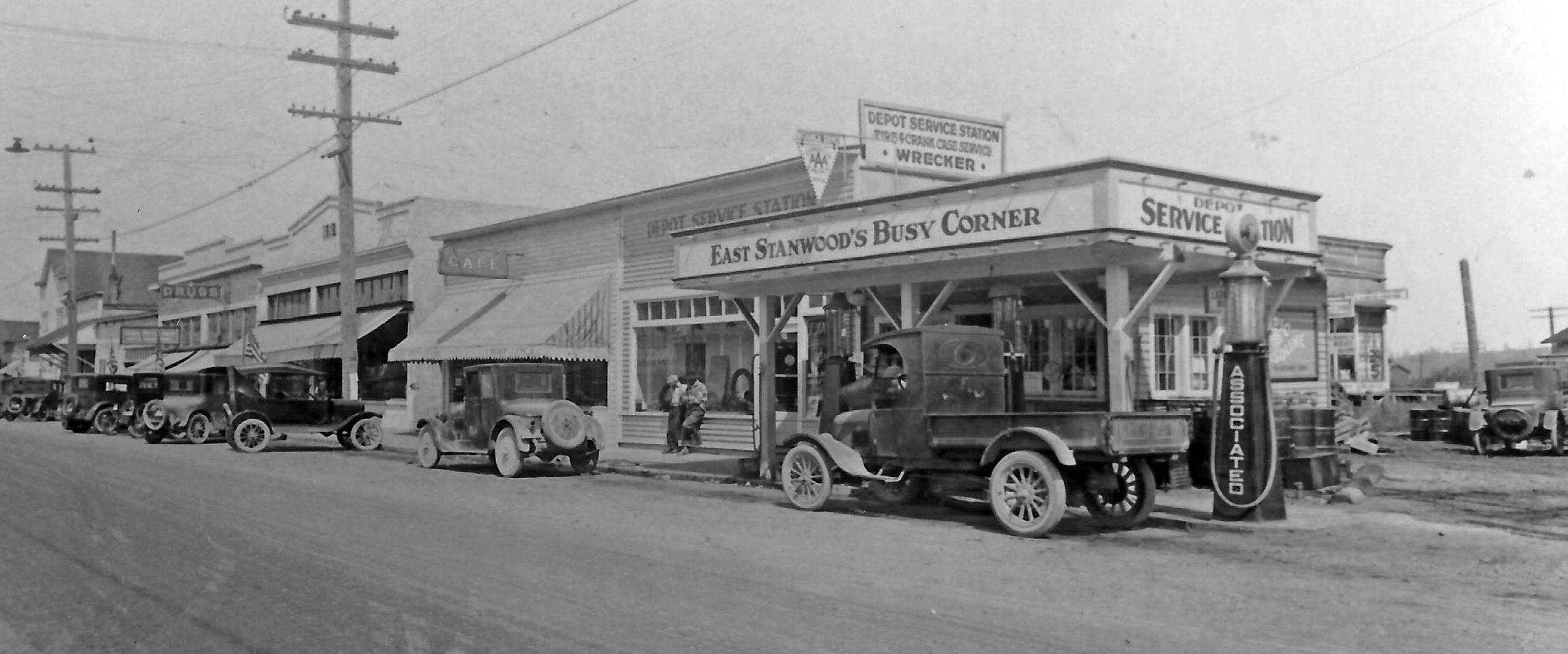
This view shows North side of 271st St NW in Stanwood looking northwest. From left the buildings are the Granary (distant left, originally known as the People’s Union), an unknown storefront, the N. V. KIng Building (1921), the 1918 Mercantile (behind the telephone pole), a cafe and the Depot Service Station garage with its East Stanwood Busy Corner sign. The cafe and service station burned in 1997. Photograph from the SAHS Collection 1995.28.21.
Some might be aware that Stanwood was once two towns: Stanwood (near river) and “East Stanwood” (near the railroad tracks).
The corner just east of the Stanwood Station had a small gas station with an awning that advertised itself as East Stanwood Busy Corner. It was a popular stop on the Pacific Highway between Everett and points north before Stanwood was bypassed in the 1930s,
In August 1997 the historic buildings that were once the Depot Service Station, a garage and the café (next door) burned in a two alarm fire. The businesses in the buildings at the time were the Eastside Salon, the gift store Emma’s Cottage and the antique shop, Yo Mama’s Attic. Firefighters prevented the fire from spreading to other businesses but managed to save the 1918 Mercantile. The owner at the time had to demolish the fire damaged buildings and currently that space is a grassy open space across from the Stanwood Railroad Station. Read on..
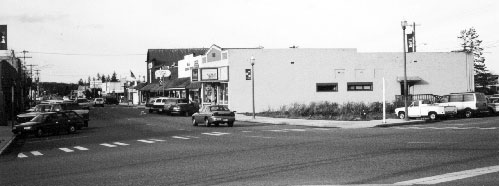
The white concrete building is the East Stanwood Mercantile popularly know as the Stubb Mercantile.
When the museum opens again for visits, you can see a small exhibit that displays more photographs of this story but for now, perhaps this property can be the first East Stanwood Busy Corner Park as part of the City of Stanwood’s Main Street Revitalization Program.
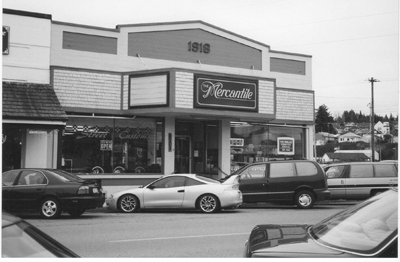
The Mercantile. Photo taken in 2003.
The original 1914 East Stanwood Mercantile store business was established by Otto Stubb and Andrew Frederickson. In 1917 Frederickson sold his interest to Otto Stubb but in 1918 the building was destroyed in a fire. The new concrete building that still stands was completed in October 1918. But there could be no grand opening ceremony because of the Influenza epidemic. (Stanwood News Oct 18, 1918). One month later, the Armistice was signed ending World War I. See below…
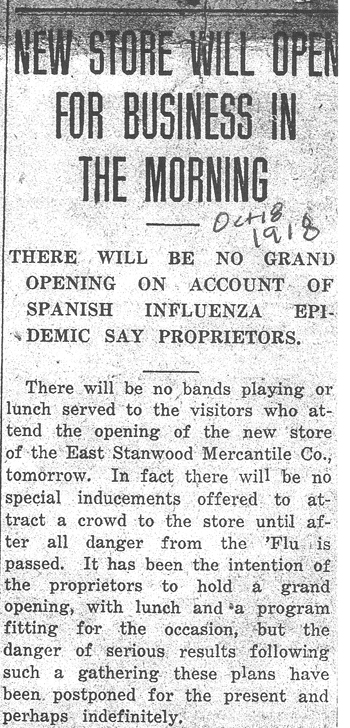
Opened to the public Oct 19…”The building is certainly a credit to the community … [who] will wish the proprietors, Messrs. Otto Stubb and O. C. Amundson the best of luck…” Stanwood Tidings Oct 18, 1918.

